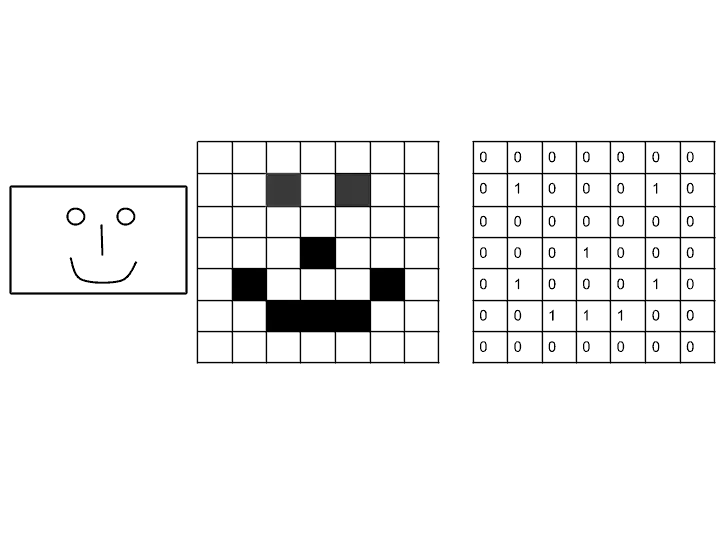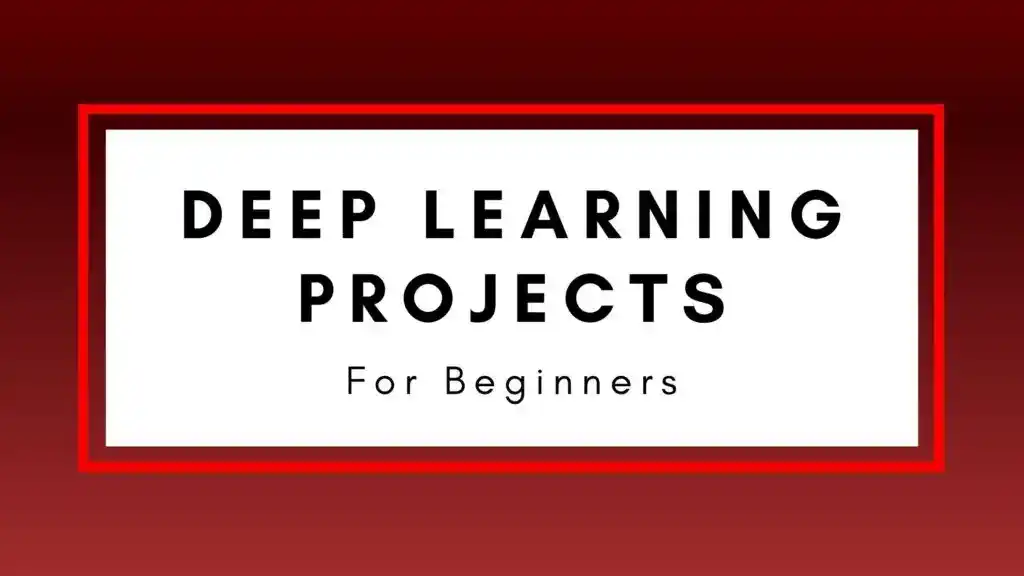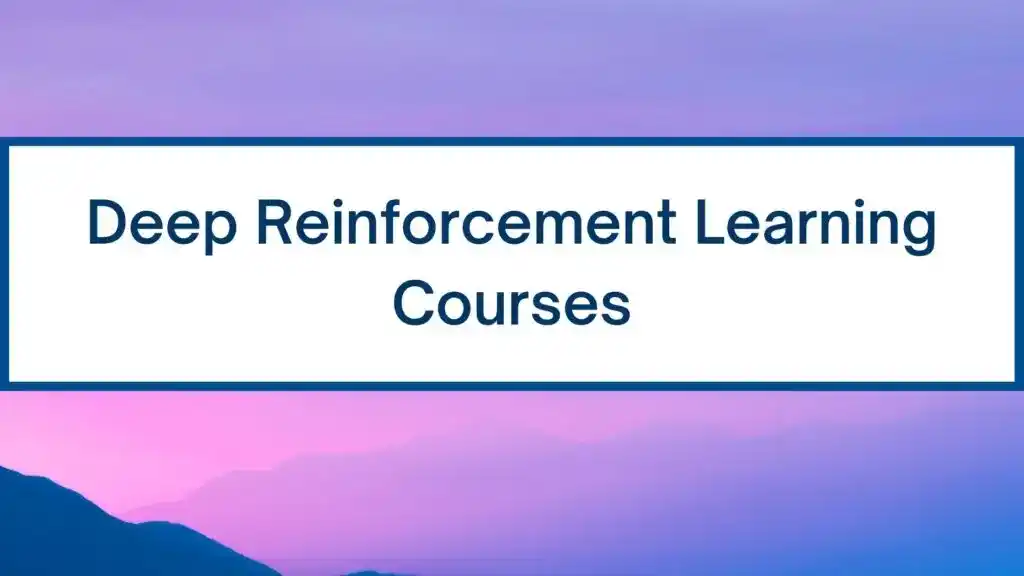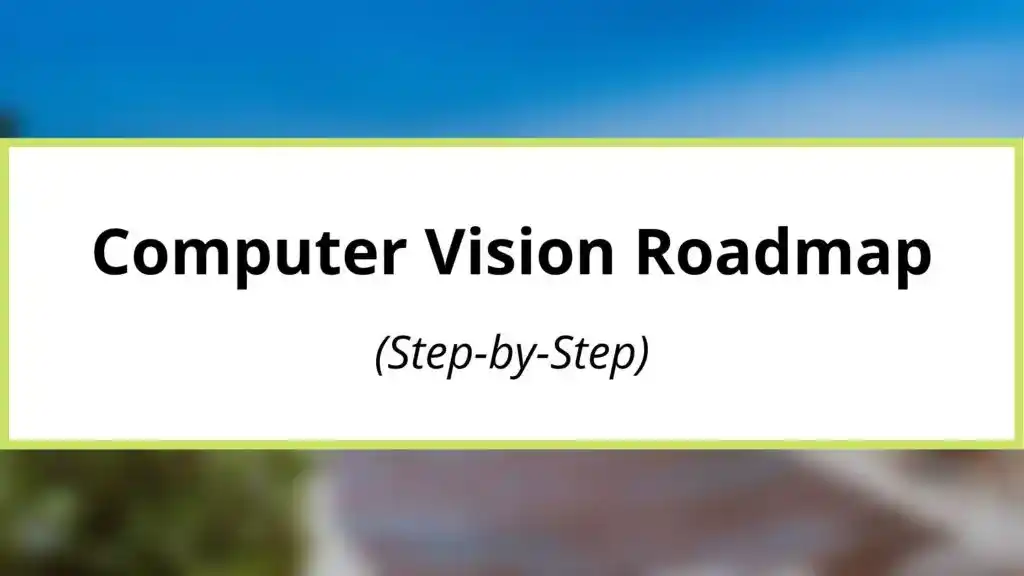Deep Learning
Do you wanna know about the basics of Deep Learning?. If yes, then Congratulation!. You are in the right place. Here I am gonna discuss all the basic details of Deep Learning. At the end of this article, your basics will be cleared related to Deep Learning. So, for that, Read the full article.
Let’s get started!.
Hello & Welcome!
Here, You will learn the following concepts-
Let’s start with the definition of DL-
What is Deep Learning
Deep Learning (DL) is the subpart of Machine Learning. And Machine Learning is the subpart of Artificial Intelligence. The main objective of DL is to mimic humans.
In simple words, DL tries to think in the same way as humans think.
DL is a machine learning technique that learns the features directly from data. This data can be images, text, videos, or sound.
DL can categorize images into different classes. I will discuss this in detail in the upcoming section.
DL can work on structured data as well as unstructured data.
If you want to Learn DL Definition in detail. Then You should definitely read this article-What is DL and Why it is Popular?
Now, let’s see What is the need to use DL.
Why DL
The main reason to use Deep Learning is the size of the Data. That means DL gives excellent results if you have a large dataset.
The more data you have, the better result it will give.
This feature makes DL very popular.
Another Reason to use machine learning is self feature extraction. That means you don’t need to feed all features manually. DL automatically extracts all features.
The next reason to use DL is Problem Complexity. DL can easily perform operations on complex real-world problems.
So, these are three main reasons, why DL is so popular.
Now, let’s see How DL works.
How does Deep Learning work?
DL uses an Artificial Neural network. Artificial Neural Network is much similar to the human brain.
The human Brain consist of neurons. These neurons are connected with each other. In the human brain, neuron looks something like that…

As you can see in this image, There are Neuron, Dendrites, and axon.
Do you think?
When you touch the hot surface, how you suddenly remove your hand?
This is the procedure happens inside you.
When you touch some hot surface. Then automatically your skin sends a signal to the neuron. And then neuron takes a decision, “Remove your hand”.
So that’s all about the Human Brain.
Artificial Neural Network
In the same way, Artificial Neural Network works.
In Artificial Neural Network, there are also neurons. Which works in the same manner.
If you want to get in-depth knowledge of Neurons In Artificial Intelligence. Read this article. Artificial Neural Network: What is Neuron? Ultimate Guide. Here, your all doubts will be cleared related to Neurons and Layers of ANN.
Artificial Neural Network has three layers-
- Input Layer.
- Hidden Layer.
- Output Layer.
Let’s see in this image-

Here, all the circles you are seeing are neurons. Artificial Neural Network is fully connected with these neurons.
Data is passed to the input layer. And then the input layer passed this data to the next layer, which is a hidden layer. The hidden layer performs certain operations. And pass the result to the output layer.
So, this is the basic rough working procedure of an Artificial Neural Network.
But,
In these three layers, various computations are performed.
Let’s see in a concise way.
One Neuron is connected with others with synapses. Synapses are the connecting lines between two neurons.
Each synapse has some associated weights. Let’s understand with the help of this image.

Activation Function
So, with these weights, two operations are performed.
- Weighted Sum.
- Activation Function.
The first step is the weighted sum. All weights are multiplied with input values. Input values are the data you pass to the input layer.
Weighted sum looks something like that…
[ x1.w1+x2.w2+x3.w3+………………..Xn.Wn]
After calculating the weighted sum, the activation function is applied. And then neuron decides whether to send this value to the next layer or not.
The activation function plays an important role. The activation function generates an output based on input signals.
The Activation function is performed in Hidden Layer and in the Output Layer.
The most popular and used Activation functions are-
- Threshold Activation Function.
- Sigmoid Function.
- Rectifier Function.
- Hyperbolic Tangent(tan h)
- Linear Function.
If you want to learn about all these activation functions in detail. Then definitely, you should read this article-Activation Function and Its Types-Which one is Better?. This article will give you complete idea about Activation Function.
After applying the activation function, the output is generated.
Gradient Descent
This output is Predicted output. So we match this predicted output with the actual output. And we check the difference between two outputs. The predicted output and the actual output.
The difference between these two outputs is known as the Cost Function.
The formula for calculating the cost function is-
cost function= 1/2 square(y – y^)
Where y is the actual output. And y^ is the predicted output.
Our goal is to minimize the cost function.
So, once Neural Network calculates the cost function. It backpropagates to update the weights. You can understand with the help of this image.

So, the neural network updates the weights. And again the Neural network predicts the output. This predicted output is matched with actual output.
This process continues until the cost function is minimized.
So, the question comes into your mind is How to minimize the cost function?.
Right?.
The answer is with the help of the Gradient Descent Method.
The objective of Gradient Descent is to minimize the cost function.
For more details on Gradient Descent. Read this article.- Gradient Descent Neural Network- Quick and Super Easy Explanation!. Here, you will understand how Gradient Descent minimizes the cost function.
But,
In Gradient Descent, the cost function should be convex.
But What?.
When your cost function is not convex?.
So, for that Stochastic Gradient Descent is used.
What is the Convex cost function?. What is Stochastic Gradient Descent?. And how stochastic gradient descent work?. For that Read this article. Stochastic Gradient Descent- A Super Easy Complete Guide!. Here, you will get a complete idea about Stochastic Gradient Descent?
So, that’s all about How DL works?.
I hope now you have basic knowledge of the DL working procedure.
How Neural network work on Real-world Problems?. Read this article.-How does Neural Network Work? A step by step Guide. Here, I explained with the help of a real-world example. An example of Property Evaluation.
Now, let’s see DL Algorithms.
Algorithms of Deep Learning
Here, I am gonna tell you the most used top 5 DL Algorithms.
- Feedforward Neural Network.
- Backpropagation.
- Convolutional Neural Network.
- Recurrent Neural Network.
- Generative Adversarial Networks (GAN).
Learn all these Algorithms in detail in this article.- Top 5 DL Algorithms List, You Need to Know.
Here, I will discuss a brief about.- Convolutional Neural Network and Generative Adversarial Networks (GAN).
Let’s start with Convolutional Neural Network
Convolutional Neural Network
The main applications area of the Convolutional Neural Network is Image Recognition and Natural Language Processing. Convolutional Neural Network is a very powerful algorithm of DL.
Convolutional Neural Network (CNN) takes an image to identify its features and predict it.
Suppose, when you see some image of Lion, your brain focuses on certain features of Lion to identify. These features may be Lion’s ears, eyes, or it may be anything else. Based on these features your brain gives you signal that this is a lion.
Similarly, Convolutional Neural Network processes the image and identifies it based on certain features.
You can understand the working of Convolutional Neural Network, with this image.

CNN takes an input image, extract certain features, and predict the output.
There are various steps in Convolutional Neural Network. These steps are-
- Convolution Operation.
- ReLU Layer.
- Pooling.
- Flattening.
- Full Connection.
Here, I will not discuss it in detail.
If you want to learn the whole procedure of CNN. Then read this article.-What is Convolutional Neural Network? Super Easy Explanation!. Here I discussed everything related to Convolutional Neural Network.
Now, let’s see the next most popular deep learning algorithm.- Generative Adversarial Networks (GAN).
Generative Adversarial Networks (GAN).
Generative Adversarial Network (GAN) is a powerful algorithm of DL. It is unsupervised learning. GAN was first developed by Ian J. Goodfellow in 2014.
The whole concept of Generative Adversarial Network is based on two models. – Generator and Discriminator.
They both compete with each other. And their competition makes GAN more powerful and accurate.
Generative Adversarial Network is used in Image Generation, Video Generation, and Audio Generation.
GAN is able to create an image, videos, audio in the same way as human creates.
GAN is used in various fields. Some most used fields are-
- Music.
- Deepfake detection.
- Text to Image Generation.
- Medicine.
- Image to Image Translation.
- Enhance the resolution of an Image.
- Interactive Image Generation.
CNN takes Images and converts it into features of an image. Where a GAN takes features of Images and converts into an image.
For more details on Generative Adversarial Network. Read this article. – What is Generative Adversarial Network? All You Need to Know. Here, you will learn What is GAN?. How GAN works?. How Training is performed in GAN?. And all other details related to GAN.
Now, let’s move into the next section.
Deep Learning vs Machine Learning
DL is taking over Machine Learning. And the reason is its features.
There are basically three main differences between DL and Machine Learning.
- DL gives excellent results on large datasets. But Machine Learning algorithms fail to process huge datasets. Machine Learning can work only on small datasets. This is the limitation of Machine Learning. But DL can easily perform operations on large datasets.
- In Machine Learning, you need to feed all features manually to train the model. But DL automatically extracts all the features. This makes DL much powerful over Machine Learning. Because manual feeding is a time-consuming process, especially if you have a large dataset.
- Machine Learning can’t solve complex real-world problems. But Deep Learning Algorithms can easily solve real-world problems. That’s why many fields are using DL algorithms over Machine Learning.
I hope now you understand the difference between the two.
If you want to know the difference between Deep Learning and Neural Network. Then read this article. –DL vs Neural Network, The Main Differences!
Now, let’s move into the next section.
Example of Deep Learning
DL is used in almost every field nowadays. But the most used areas of DL is-
- Self-driving cars– Now, there is no need for drivers. Cars can drive. How amazing it is. And that happens because of DL. By using DL algorithms, these cars can analyze the environment. Like to analyze the pedestrian, traffic lights, roads, and building as an object.
- Translation– When you want to translate text or speech from one language to another. Then the tool you use is based on DL.
- Chatbot- Do you think, when you have some query, and you contact with customer care, so who replies on that side?. They are chatbots. Chatbots solve your query in the same way as humans do. That happens because of DL.
- Robotics- In robotics, you can use DL to identify the nearby atmosphere so that robots can walk and react accordingly.
- Medical Field- Medical fields are also using DL. They use to detect cancer cells in humans. How much the area covered by cancer cells or any more task DL is used.
Now, let’s see the skills required for DL.
Skills Required for Deep Learning
DL is becoming popular day by day. Now having knowledge of DL is also important along with Machine Learning.
As various fields are adopting DL. So the knowledge of DL is important.
So to learn DL, you should have the following 6 skills-
- Maths Skills.
- Programming Skills.
- Data Engineering Skills.
- Machine Learning Knowledge.
- Knowledge of DL Algorithms.
- Knowledge of DL Frameworks.
Here, I will not discuss these skills in detail.
But,
If you wanna know the detail of DL skills. Then read this article. Top 6 Skills Required for DLThat Will Make You Expert!. Here, I discussed these skills in detail. You should read this article if you wanna learn DL. It will help you to decide from where to start.
Now, its time to wrap up.
Conclusion
After reading this article, I hope your all basics of DL are cleared. DL is a very powerful technique in Machine Learning. Its scope is very broad and bright.
In the upcoming year, we will see the more interesting inventions of DL.
Therefore, it’s not the end. It’s the beginning of the Deep Learning Era.
I hope you found this article helpful.
If you have any doubt, feel free to ask me in the comment section. I am always here to help you.
Thanks for reading.
All the best!.
Enjoy Learning.
FAQ
Deep Learning is the technique of Machine Learning. It works in the same manner as the human brain works. It uses Artificial Neural Network. Artificial Neural Network has three layers. An input layer, hidden layer, and output layer.
Self- Driven Cars, Robots, Chatbots, Alexa are some examples of DL.
DL works perfectly on a large dataset. Whereas Machine Learning can’t. DL extracts features automatically. Whereas Machine Learning does it manually. DL can solve complex real-world problems but machine learning can’t
Yes. If you have a complex problem, then DL is important.
CNN is the algorithm or class of DL. CNN is used for image recognition. It is a very powerful algorithm of DL.
Igor Aizenberg introduced the term “Deep Learning” in 2000. Whereas Geoffrey Hilton is the father of Artificial Neural Network. And Yann Lecun is the father of CNN.
Because of its structure. Artificial Neural Network has three layers. There may be a thousand hidden layers. The deeper the network, the more accurate its result. That’s why it is called Deep Learning.
ReLU is Rectifier Liner Unit. ReLU is a type of activation function. This is the most popular and used activation function. ReLU is mostly applied in Hidden Layers.
Yes. CNN is a DL algorithm. That is used for image recognition.
Artificial Neural Network, CNN, Recurrent Neural Network, Generative Adversarial Network, Backpropagation, and Feed Forward Neural Network are some DL algorithms.
Subscribe For More Updates!
All Related Articles
Ready to Explore?
What is Deep Learning and Why it is Popular?
Artificial Neural Network: What is Neuron? Ultimate Guide.
Activation Function and Its Types-Which one is Better?
How does Neural Network Work? A step by step Guide.
Gradient Descent Neural Network- Quick and Super Easy Explanation!
Stochastic Gradient Descent- A Super Easy Complete Guide!
Skills Required for Deep Learning That Will Make You Expert in 2025
What is Convolutional Neural Network? Super Easy Explanation!
Top 5 Deep Learning Algorithms List, You Need to Know
What is Generative Adversarial Network? All You Need to Know
Deep Learning vs Neural Network, The Main Differences!
10 Best Books on Neural Networks and Deep Learning, You Should Read
Implementation of Artificial Neural Network in Python- Step by Step Guide
12 Best Deep Learning Courses on Coursera You Need to Know in 2025
How Good is Udacity Deep Learning Nanodegree in 2025?
9 Best+ Free Online Courses for PyTorch for Deep Learning in 2026
12 Best Courses to Learn Deep Learning You Need to Know- 2025
7 Best Free Deep Learning Online Courses and Tutorials in 2025
8 Deep Learning Project Ideas for Beginners- Must Try in 2025
Best Resources to Learn Deep Learning (YouTube, Tutorials, Courses, Books, etc)- 2025
7 Best Free Computer Vision Courses You Must Know in 2025
Coursera Deep Learning Specialization Review- Latest 2025
8 Best Advanced Deep Learning Courses Online You Must Know in 2026
Deep Learning Roadmap 2026- Step-by-Step Career Path
Udacity Computer Vision Nanodegree Review 2026- Is It Worth it?
10 Best Deep Reinforcement Learning Courses You Must Know in 2026
How to learn Computer Vision? [Computer Vision Learning Path]- 2026
8 Best Convolutional Neural Network Resources in 2026
Udacity Deep Reinforcement Learning Review- Is It Worth It? 2026
41 Best Resources to learn Reinforcement Learning(YouTube, Books, Courses, & Tutorials)
15 Best Neural Network Courses [Bestseller & FREE 2026]
How to Learn Neural Networks From Scratch? [Step-by-Step] 2026
How to Learn Deep Learning? Steps I Took for Deep Learning
Do you want to know How to Learn Deep Learning?… If yes, this blog is…

































